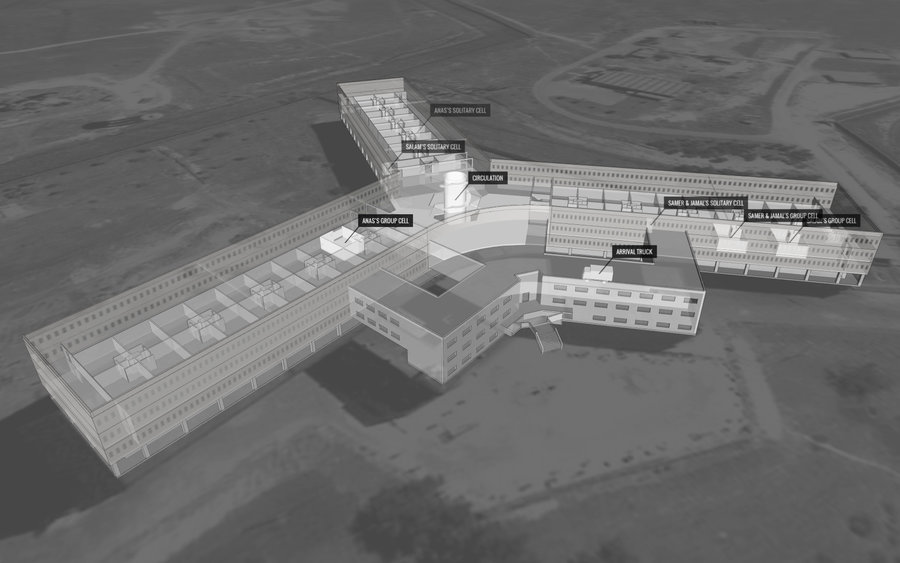Saydnaya military prison, most notorious jail of Syria, a hidden complex now brought to life in a harrowing interactive digital model as part of Amnesty International’s work to raise awareness of the darkest untold stories of the brutal regime of President Assad.
It is a black spot on the human rights map. The high-security prison has been off limits to journalists and monitoring groups in recent years. It situated in 25 km north of Damascus, near the ancient Saydnaya monastery where Muslims and Christians have prayed together for centuries. Nothing has been known about what goes on inside the prison until now.
According to a damning new report that 17,723 people have died in custody in Syria since the crisis began in March 2011. Amnesty International has collaborated with the Forensic Architecture agency at Goldsmiths, University of London, to reconstruct the site.
Director of Forensic Architecture, Eyal Weizman said that as we pieced together the model, we realised the building is not only a space where incarceration, surveillance and torture take place, but the building is an architectural instrument of torture itself.
Is this the worst place on earth? See inside Syria’s most notorious torture prison, Saydnaya https://t.co/mBsJktMO8C pic.twitter.com/xlRymxtdUU
— Amnesty UK (@AmnestyUK) August 18, 2016
Abu Hamdan said that like a form of sonar, the sounds of the beatings illuminated the spaces around them. The prison is really an echo chamber: one person being tortured is like everyone being tortured, because the sound circulates throughout the space, through air vents and water pipes. You cannot escape it.
Deprived of their visual sense for months and years on end, the Saydnaya detainees developed an acute aural sensitivity, able to identify the different sounds of broomsticks on flesh, electrical cables, belts and the difference between bodies being kicked, punched, or beaten against the wall.
A Former Saydnaya detainee, Salam Othman said in a video interview that you try to build an image based on the sounds you hear. You know the person by the sound of his footsteps. You can tell the food times by the sound of the bowl. If you hear screaming, you know newcomers have arrived. When there is no screaming, we know they are accustomed to Saydnaya. During punishments, inmates were forbidden from making a sound. Any screaming only prolonged the torture.
Another detainee recounts details of the welcome party, Jamal Abdou said that beatings with cables and metal bars were followed by so-called security checks, during which women were subjected to sexual assault and rape by male guards. As we waited for our turn, we heard the sounds of beating, of people falling out of the truck, we heard people scream. Everyone was screaming – the prisoners and the guards.
Abdou and Ahmed spent the first five months of their incarceration underground in a freezing-cold solitary confinement cell, a space just 2.35m by 1.65m, designed for one person but used to hold up to 15 people at a time, forced to take turns sitting down in the cramped room. They recall days at a time when the water was cut off, forcing them to drink from the toilet gutter, inducing hallucinations and waves of hysteria when the sound of water dripping through the pipes returned. “When I closed my eyes, I started seeing waterfalls,” says Ahmed.
They remember days at a time when the water was cut off, forcing them to drink from the toilet gutter, when the sound of water dripping through the pipes returned inducing hallucinations and waves of hysteria. Ahmed says that I started seeing waterfalls, when I closed my eyes.
For Diab Serriya, who was imprisoned in Saydnaya from 2006 to 2011, the reconstruction serves as a lasting reminder.
He says that I nearly died there, I lost five years of my life there. I just want it to remain so that other generations will see this horrible place, where we were tortured. The world should know it is the worst place on earth.







